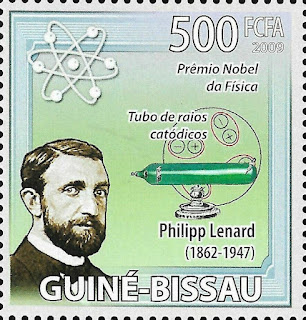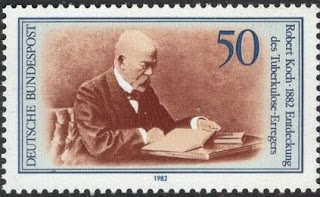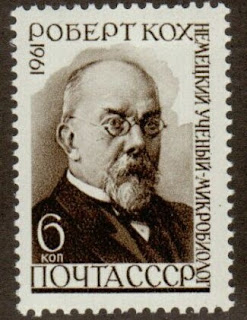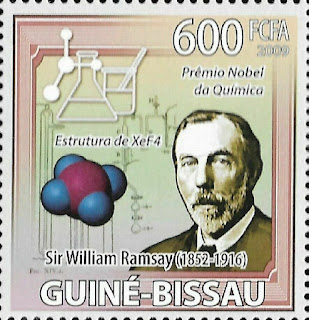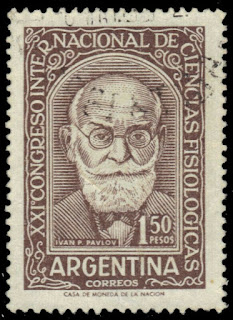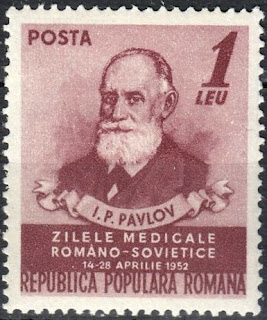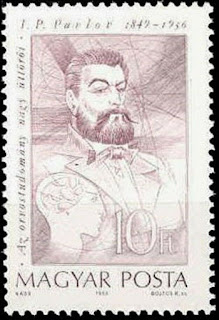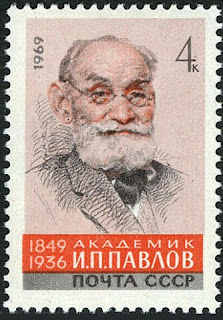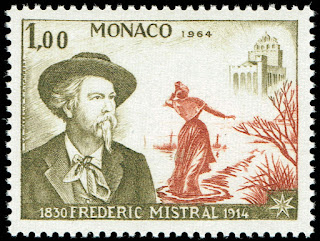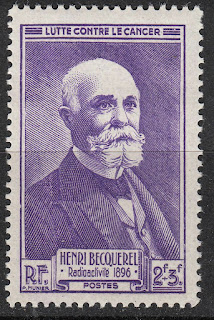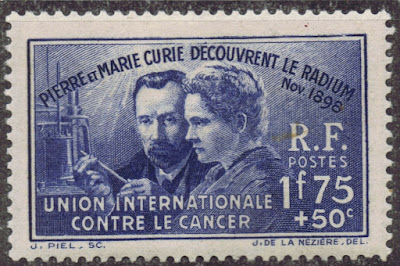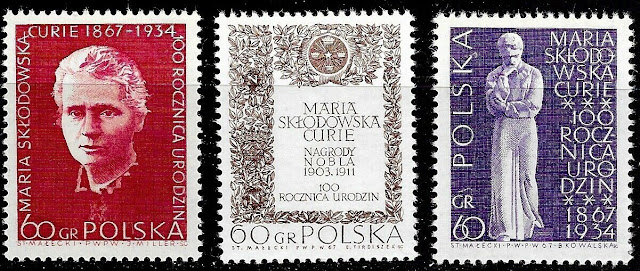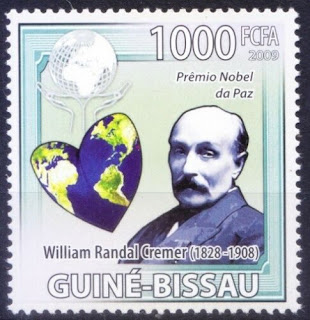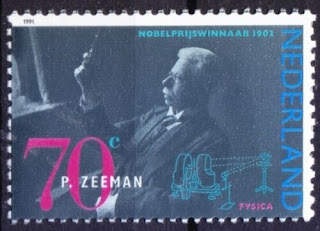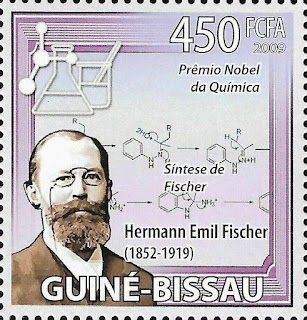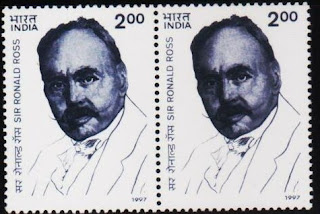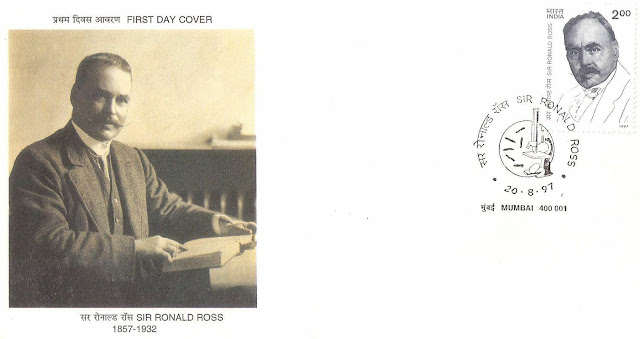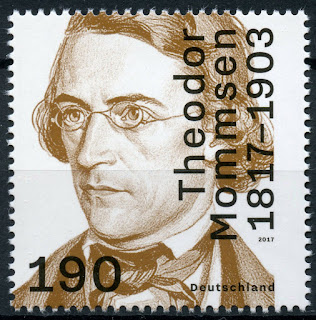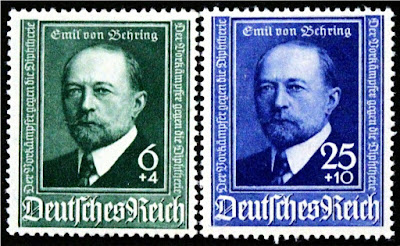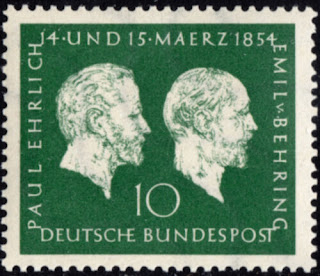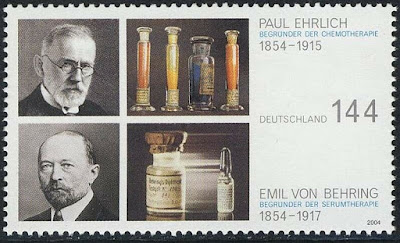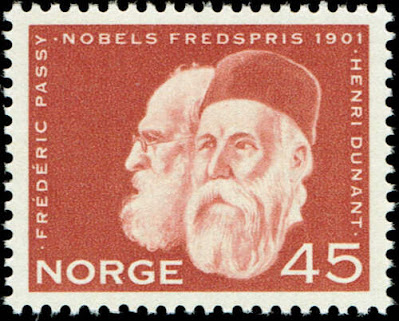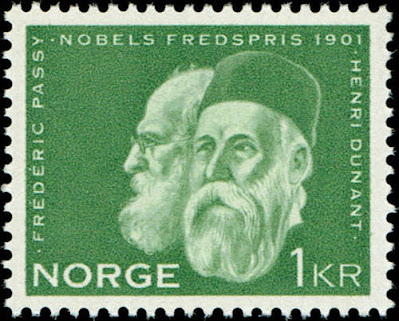The Nobel Prizes (Swedish: Nobelpriset, Norwegian: Nobelprisen) are prizes awarded annually by the Royal Swedish Academy of Sciences, the Swedish Academy, the Karolinska Institutet, and the Norwegian Nobel Committee to individuals and organizations who make outstanding contributions in the fields of chemistry, physics, literature, peace, and physiology or medicine. They were established by the 1895 will of Alfred Nobel, which dictates that the awards should be administered by the Nobel Foundation. The Nobel Memorial Prize in Economic Sciences was established in 1968 by the Sveriges Riksbank, the central bank of Sweden, for contributions to the field of economics. Each recipient, or "laureate", receives a gold medal, a diploma, and a sum of money, which is decided annually by the Nobel Foundation
Here is a list of 1901 Nobel laureates
Physics: Wilhelm Röntgen, German physicist and academic
Wilhelm Conrad Röntgen (27 March 1845 – 10 February 1923) was a German mechanical engineer and physicist, who, on 8 November 1895, produced and detected electromagnetic radiation in a wavelength range known as X-rays or Röntgen rays, an achievement that earned him the first Nobel Prize in Physics in 1901. In honour of his accomplishments, in 2004 the International Union of Pure and Applied Chemistry (IUPAC) named element 111, roentgenium, a radioactive element with multiple unstable isotopes, after him.
Today, in Remscheid-Lennep, 40 kilometers east of Düsseldorf, the town in which Röntgen was born in 1845 is the Deutsches Röntgen-Museum.
In Würzburg, where he discovered the X-rays, a non-profit organization maintains his laboratory and provides guided tours to the Röntgen Memorial Site.
World Radiology Day: The International Day of Radiology is an annual event promoting the role of medical imaging in modern healthcare. It is celebrated on 8 November each year, coincides with the anniversary of the discovery of X-rays by Wilhelm Roentgen in 1895. It was first introduced in 2012, as a joint initiative, by the European Society of Radiology (ESR), the Radiological Society of North America (RSNA), and the American College of Radiology (ACR).
Röntgen Peak in Antarctica is named after Wilhelm Röntgen
Stamps from India, Germany and Spain depicting Wilhelm Röntgen



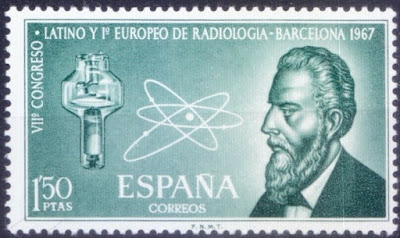
Chemistry: Jacobus Henricus van 't Hoff, Dutch chemist and academic
Jacobus Henricus "Henry" van 't Hoff Jr. (30 August 1852 – 1 March 1911) was a Dutch physical chemist. A highly influential theoretical chemist of his time, Van 't Hoff was the first winner of the Nobel Prize in Chemistry. His pioneering work helped found the modern theory of chemical affinity, chemical equilibrium, chemical kinetics, and chemical thermodynamics. In his 1874 pamphlet Van 't Hoff formulated the theory of the tetrahedral carbon atom and laid the foundations of stereochemistry. In 1875, he predicted the correct structures of allenes and cumulenes as well as their axial chirality. He is also widely considered one of the founders of physical chemistry as the discipline is known today.
Van 't Hoff earned his earliest reputation in the field of organic chemistry. In 1874, he accounted for the phenomenon of optical activity by assuming that the chemical bonds between carbon atoms and their neighbors were directed towards the corners of a regular tetrahedron. This three-dimensional structure accounted for the isomers found in nature. He shares credit for this with the French chemist Joseph Le Bel, who independently came up with the same idea.
Three months before his doctoral degree was awarded, Van 't Hoff published this theory, which today is regarded as the foundation of stereochemistry, first in a Dutch pamphlet in the fall of 1874, and then in the following May in a small French book entitled La chimie dans l'espace. A German translation appeared in 1877, at a time when the only job Van 't Hoff could find was at the Veterinary School in Utrecht. In these early years his theory was largely ignored by the scientific community, and was sharply criticized by one prominent chemist.
In 1884, Van 't Hoff published his research on chemical kinetics, titled Études de Dynamique chimique ("Studies in Chemical Dynamics"), in which he described a new method for determining the order of a reaction using graphics and applied the laws of thermodynamics to chemical equilibria. He also introduced the modern concept of chemical affinity. In 1886, he showed a similarity between the behaviour of dilute solutions and gases. In 1887, he and German chemist Wilhelm Ostwald founded an influential scientific magazine named Zeitschrift für physikalische Chemie ("Journal of Physical Chemistry"). He worked on Svante Arrhenius's theory of the dissociation of electrolytes and in 1889 provided physical justification for the Arrhenius equation. In 1896, he became a professor at the Prussian Academy of Sciences in Berlin. His studies of the salt deposits at Stassfurt were an important contribution to Prussia's chemical industry.
Van 't Hoff became a lecturer in chemistry and physics at the Veterinary College in Utrecht. He then worked as a professor of chemistry, mineralogy, and geology at the University of Amsterdam for almost 18 years before eventually becoming the chairman of the chemistry department. In 1896, Van 't Hoff moved to Germany, where he finished his career at the University of Berlin in 1911. In 1901, he received the first Nobel Prize in Chemistry for his work with solutions. His work showed that very dilute solutions follow mathematical laws that closely resemble the laws describing the behavior of gases.
Stamps from Grenada and the Netherlands depicting Jacobus Henricus van 't Hoff


Physiology or Medicine: Emil von Behring, German physiologist and immunologist
Emil von Behring (Emil Adolf von Behring), born Emil Adolf Behring (15 March 1854 – 31 March 1917), was a German physiologist who received the 1901 Nobel Prize in Physiology or Medicine, the first one awarded in that field, for his discovery of a diphtheria antitoxin. He was widely known as a "saviour of children," as diphtheria used to be a major cause of child death. He was honored with Prussian nobility in 1901, henceforth being known by the surname "von Behring."
In 1895 he became Professor of Hygienics within the Faculty of Medicine at the University of Marburg, a position he would hold for the rest of his life. He and the pharmacologist Hans Horst Meyer had their laboratories in the same building, and Behring stimulated Meyer's interest in the mode of action of tetanus toxin.
Behring won the first Nobel Prize in Physiology or Medicine in 1901 for the development of serum therapies against diphtheria. He was elected a Foreign Honorary Member of the American Academy of Arts and Sciences in 1902.
In 1904 he founded the Behringwerke in Marburg, a company to produce antitoxins and vaccines.
At the International Tuberculosis Congress in 1905 he announced that he had discovered "a substance proceeding from the virus of tuberculosis." This substance, which he designated "T C," plays the important part in the immunizing action of his "bovivaccine", which prevents bovine tuberculosis. He tried unsuccessfully to obtain a protective and therapeutic agents for humans.
Behring died at Marburg, Hessen-Nassau, on 31 March 1917. His name survived in the Dade Behring organisation (now part of the Siemens Healthineers), in CSL Behring, a manufacturer of plasma-derived biotherapies, in Novartis Behring and in the Emil von Behring Prize of the University of Marburg, the highest endowed medicine award in Germany.
His Nobel Prize medal is now kept on display at the International Red Cross and Red Crescent Museum in Geneva.
German stamps depicting Emil von Behring
German stamps depicting Paul Ehrlich and Emil von Behring
Literature: Sully Prudhomme, French poet and critic
René François Armand (Sully) Prudhomme (16 March 1839 – 6 September 1907) was a French poet and essayist. He was the first winner of the Nobel Prize in Literature in 1901.
Born in Paris, Prudhomme originally studied to be an engineer, but turned to philosophy and later to poetry; he declared it as his intention to create scientific poetry for modern times. In character sincere and melancholic, he was linked to the Parnassus school, although, at the same time, his work displays characteristics of its own.
His first collection, Stances et Poèmes ("Stanzas and Poems", 1865), was praised by Sainte-Beuve. It included his most famous poem, Le vase brisé. He published more poetry before the outbreak of the Franco-Prussian War. This war, which he discussed in Impressions de la guerre (1872) and La France (1874), permanently damaged his health.
During his career, Prudhomme gradually shifted from the sentimental style of his first books towards a more personal style which unified the formality of the Parnassus school with his interest in philosophical and scientific subjects. One of his inspirations was clearly Lucretius's De rerum natura, whose first book he translated into verse. His philosophy was expressed in La Justice (1878) and Le Bonheur (1888). The extreme economy of means employed in these poems has, however, usually been judged as compromising their poetical quality without advancing their claims as works of philosophy. He was elected to the Académie française in 1881. Another distinction, Chevalier de la Légion d’honneur, was to follow in 1895.
After, Le Bonheur, Prudhomme turned from poetry to write essays on aesthetics and philosophy. He published two important essays: L'Expression dans les beaux-arts (1884) and Réflexions sur l'art des vers (1892), a series of articles on Blaise Pascal in La Revue des Deux Mondes (1890), and an article on free will (La Psychologie du Libre-Arbitre, 1906) in the Revue de métaphysique et de morale.
At the end of his life, his poor health (which had troubled him ever since 1870) forced him to live almost as a recluse at Châtenay-Malabry, suffering attacks of paralysis while continuing to work on essays. He died suddenly on 6 September 1907, and was buried at Père-Lachaise in Paris.
French stamp and First Day Cover depicting Sully Prudhomme


Peace: Henry Dunant, Swiss businessman and activist, co-founded the Red Cross
Henry Dunant (born Jean-Henri Dunant; 8 May 1828 – 30 October 1910), also known as Henri Dunant, was a Swiss humanitarian, businessman and social activist. He was the visionary, promoter and co-founder of the Red Cross.
During a business trip in 1859, Dunant was witness to the aftermath of the Battle of Solferino in modern-day Italy. He recorded his memories and experiences in the book A Memory of Solferino which inspired the creation of the International Committee of the Red Cross (ICRC) in 1863. The 1864 Geneva Convention was based on Dunant's idea for an independent organisation to care for wounded soldiers.
Dunant was the founder of the Swiss branch of the Young Men's Christian Association YMCA.
In 1901 he received the first Nobel Peace Prize together with Frédéric Passy, making Dunant the first Swiss Nobel laureate.
Stamps from various countries issued to commemorate Dunant and the Red Cross

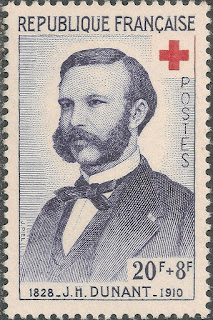

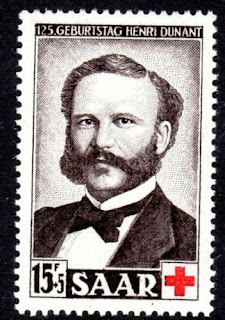

Peace: Frédéric Passy, French economist and academic
Frédéric Passy (20 May 1822 – 12 June 1912) was a French economist and pacifist who was a founding member of several peace societies and the Inter-Parliamentary Union. He was also an author and politician, sitting in the Chamber of Deputies from 1881 until 1889. He was a joint winner of the Nobel Peace Prize in 1901 for his work in the European peace movement.
Born in Paris to a prominent Catholic and Orléanist family, Passy was surrounded by military veterans and politicians. After training in law, he worked as an accountant and served in the National Guard. He soon left this position and began travelling around France giving lectures on economics. Following years of violent conflicts across Europe, Passy joined the peace movement in the 1850s, working with several notable activists and writers to develop journals, articles, and educational curricula.
While sitting in the Chamber of Deputies, Passy developed the Inter-parliamentary Conference (later the Inter-Parliamentary Union) with British MP William Randal Cremer. Alongside this, he founded several peace societies: the Ligue Internationale et Permanente de la Paix, the Société Française des Amis de la Paix, and the Société Française pour l'Arbitrage entre Nations. Passy's work in the peace movement continued into his later years, and in 1901, he was awarded the Nobel Peace Prize alongside Red Cross founder, Henry Dunant.
Passy died in 1912 after a long period of illness and incapacitation. Despite his economic works gaining little traction, his efforts in the peace movement resulted in him being recognised as the "dean of European peace activists".:34 His son, Paul Passy, published a memoir of his life in 1927, and his works are still being republished and translated into English in the 21st Century.
Stamps from Norway depicting Frederic Passy and Henri Dunant
